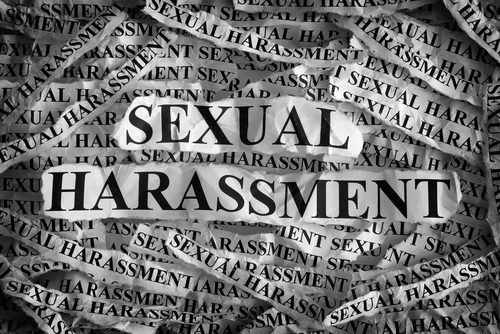An employer that had a sexual harassment policy but that failed to train its employees on the policy—and failed to insist that managers who received complaints forward them to the HR department—will face a jury trial in an Ohio federal court.
Facts
Nicole Graham was hired as a territory sales manager in January 2017 by Phillips Feed Service, Inc., a national distributor of pet food and pet supplies.
On her first day, Graham received a copy of the company’s harassment and discrimination avoidance policy. The policy defined sexual and other forms of harassing or discriminatory conduct, provided for a reporting mechanism, and explicitly prohibited retaliation against an employee who reported harassment or discriminatory conduct.
Sexual Assault and Harassment Never Reported to HR
Shortly after she was hired, Graham was to meet with her boss, regional sales manager Jeff Durgan, so they could travel together to visit with customers in her new territory. She agreed to meet him in his hotel room the day before so they could discuss plans for the “ride along” the next day, and it was there she alleges he sexually assaulted her.
On the same day of the alleged sexual assault, Graham reported the incident to Stacy Casey, another territory sales manager. Casey advised her to “keep her head down” and, like Graham, never reported the incident to Phillips’ HR department.
The next day, Durgan apologized to Graham and again invited her to his hotel room. After she declined, she claimed he became rude and hostile toward her. She also said his inappropriate conduct and sexual advances toward her continued.
Two and a half months later, Graham told another management-level employee, Kyle Wessel, that Durgan was treating her unfairly and that she believed it was because of the initial sexual assault. Wessel immediately reported the incident to the supervisor for territory managers, Lon Ziegler, but neither he nor Wessel reported the matter to HR as required by Phillips’ harassment policy.
HR Fires Harasser After Initiating Its Own Investigation
Six months later, when the company’s salesforce went through a reorganization, Graham contacted her supervisor and advised she couldn’t be on Durgan’s team. In response to her concern, the company’s HR vice president launched an investigation. After it was concluded, Durgan was terminated for a “violation of our values and our harassment policy.”
In April 2018, the company hired a new vice president of sales and determined there was a need for a reduction in force (RIF). Graham and 26 others were selected for the RIF. She contended she was let go in retaliation for reporting the alleged January 2017 sexual assault.
Retaliation Lawsuit to Proceed to Jury Trial
To prove her case, Graham needed to show:
- She was a member of a protected class (female);
- She was subjected to unwelcome sexual harassment;
- The harassment was based on sex;
- It unreasonably interfered with her work performance by creating a hostile or abusive work environment; and
- There’s a basis for employer liability.
The court noted “unwelcome sexual harassment” included “unwelcome sexual advances, requests for sexual favors, and other verbal or physical conduct of a sexual nature” that creates “an intimidating, hostile or offensive working environment.” To determine whether a person’s work environment is hostile or abusive, a court would examine all of the circumstances, including the frequency, the severity, whether it was physically threatening or humiliating or a mere offensive utterance, and whether it unreasonably interfered with an employee’s performance. The conduct must be so bad that a reasonable person would find it hostile or abusive and the person complaining also finds it so.
The company argued it exercised reasonable care to promptly prevent and correct any sexually harassing behavior but that Graham had unreasonably failed to take advantage of corrective opportunities it provided. It also argued Casey (the first person to whom she reported the harassment) wasn’t a management-level employee and therefore the company didn’t have notice of the harassment. The court found a jury would need to decide the issue.
Several factors contribute to the complexity of this particular case. For one, the company didn’t provide training on its policy, and neither the territory sales manager who first learned of the complaint nor two other management-level employees reported the incident to HR. In addition, it was eight months after the incident before HR launched an investigation. Graham v. Phillips Feed Services, Inc., 4:20:CV-20 (N.D. Ohio 12/27/21).
Best Practices for Employers
Just having a written policy prohibiting harassment and discrimination isn’t enough. Your policy must:
- Require employees to report known or suspected instances of harassment;
- Permit informal and formal complaints;
- Allow reporting to various individuals (including other supervisors, HR, ethics officers, general counsels, or in-house attorneys) so an employee can bypass the harassing supervisor; and
- Prohibit retaliation against any employee who reports in good faith known or suspected instances of harassment.
Additionally, you should train all employees on the policy, to include what types of behaviors are prohibited and how such behaviors should be reported. And clearly communicate that all employees are responsible for reporting known or suspected instances of harassment or discrimination. Supervisors must also understand that a report to them is a report to the company.
Roberta Fields is an attorney in the Oklahoma City, OK, office of McAfee & Taft. She may be contacted at roberta.fields@mcafeetaft.com.

